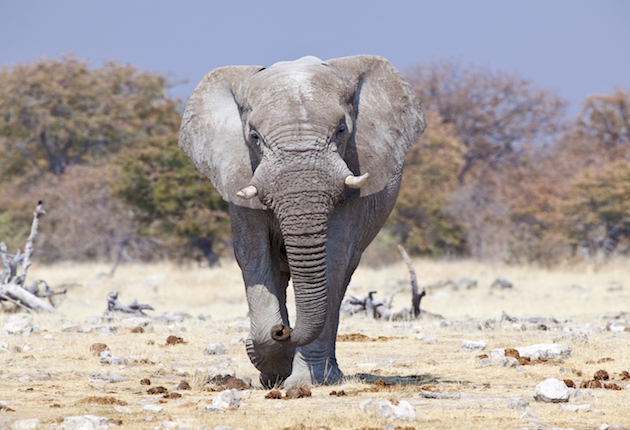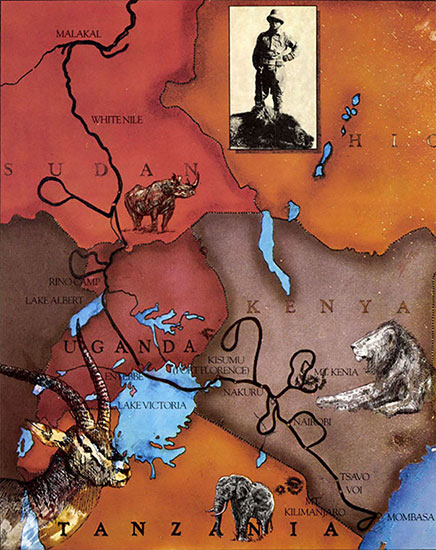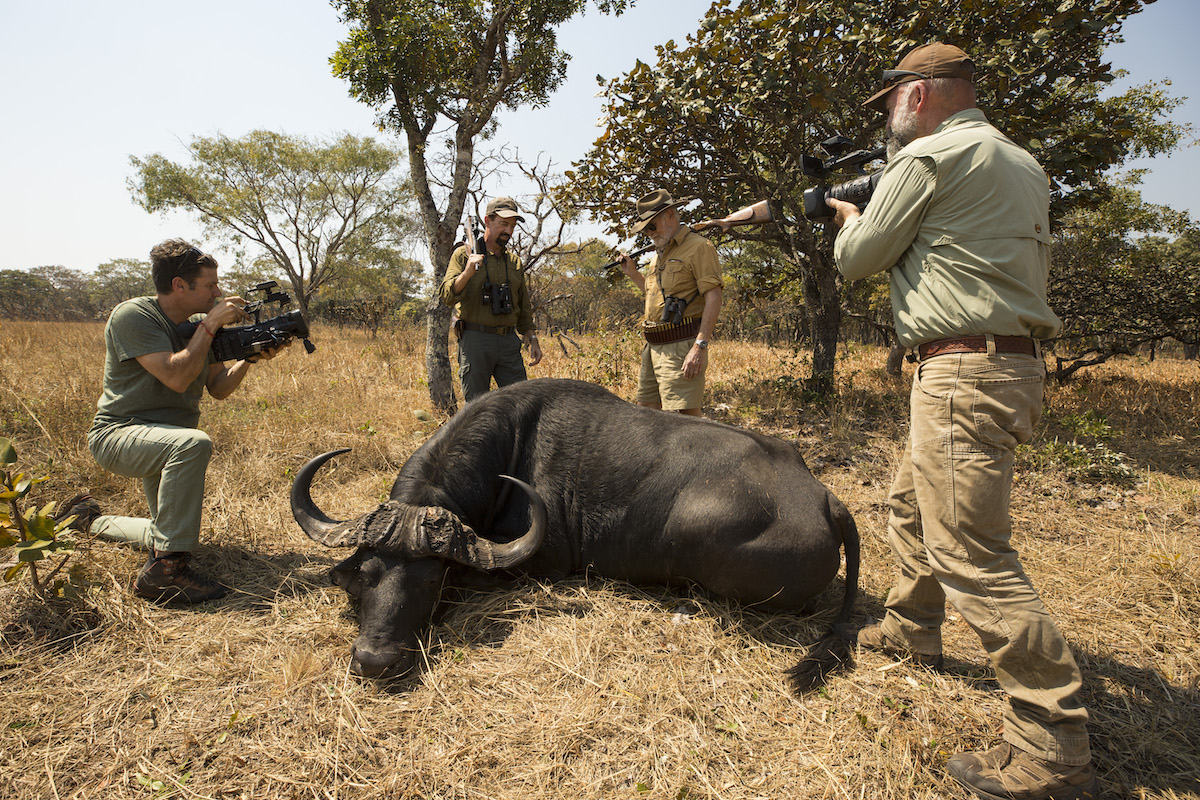After choosing a site for camp, I went out hunting and shortly came on a spoor which joined some others.
I was about to follow the newest when a little Baganda porter, called Maliko, pointed out that the original and older spoor was of a bigger elephant, and so I took that. When we got out into less hard country, we found that it was really a big elephant, and a lone one, for it never joined any others, so I rewarded Maliko with a vest on return to camp.
This elephant seemed to prefer to walk downwind and gave us a long hunt. At last, when the spoor began to show traces of being quite fresh and we were expecting every moment to overhaul him, the old fool marched downwind straight into the plantations of some villages, and then hearing the people shouting, got alarmed and stampeded off, so we had to begin the long track all over again.
At last we came out on a stream. My porters urged me to go back, as the stream was too deep to wade and the elephant evidently did not intend to stop. But I was not going to be diverted so easily, so I undressed and crossed the stream, which, after all, was only up to the armpits but was going very fast.
Again the old elephant steered downwind, and it seemed hopeless; however, we stolidly held the spoor till it crossed the wind again. Suddenly, coming round a corner, I got the start I had been preparing for for so long, as there he was, standing 40 yards away. I thought that I would make certain of him, so I exchanged the Mannlicher for the big bore; not without some difficulty, however, as directly we saw him, the gallant Maliko retired with it.
I came up again and let loose both barrels. The elephant moved forward a bit and stood, evidently badly shaken up.
I must make certain of him, and so turned for the Mannlicher. The trusty Maliko was 20 or 30 yards in the rear. There was no time to be lost, so I ran to him. Maliko misinterpreted this action, however, and came to the conclusion that I was hotly pursued by the elephant. The bush was thick and he could not see from where he was, so he turned and fled whilst I pursued him.
I got the Mannlicher and came back again, finding my elephant patiently awaiting me. I fired four shots with the Mannlicher, each of which misfired. I found afterwards that, whilst crossing the river, water had got into the bolt and rusted it—a thing which had never happened with my old one, which I had had seven years, whilst this was a new one.
The Mannlicher being useless, I must needs get my big bore again, and again Maliko retired before me. I got the big bore and returned again to my old position. The elephant was still standing in the same place, only now he had turned away from me instead of being broadside. Probably he would have fallen anyhow in another few minutes, as he must have been very badly hit not to move. Anyhow, I would make certain of him, so I moved up close alongside and put a shot into the shoulder, and he dropped.
The enormous tusks I had imagined from the size of the spoor were only 40 pounds. The size of the spoor is generally a very fair test of age and, hence, size of tusk. Of the five elephant we shot in Uganda, my rule came out exactly. Here are the weights of tusks and sizes of spoor.
1. size of spoor, 19½ inches; weight of two tusks, 114 pounds.
2. size of spoor, 20 inches; weight of two tusks, 126 pounds.
3. size of spoor, 20¾ inches; weight of two tusks, 132½ pounds.
4. size of spoor, 21 inches; weight of two tusks, 136 pounds.
5. size of spoor, 22 inches; weight of two tusks, 172½ pounds.
However, there are often exceptions to this rule, and this was one, as his spoor was 20½ inches and the weight of the two tusks 79 pounds. I have noticed, though, that elephant have bigger feet in some countries than others. The relative sizes of tusk and foot are fairly uniform in one country but cannot be compared so well with measurements from another.
The elephant had taken us round in a circle and so we were not so very far from our camp. We shortly struck a path which took us to a village, and from there we got a guide to take us by the shortest way back to camp.
Note: An excerpt from Hunting the Elephant in Africa, 1913.
 Sporting Classics has compiled this remarkable anthology showcasing the best African adventures published in our award-winning magazine.
Sporting Classics has compiled this remarkable anthology showcasing the best African adventures published in our award-winning magazine.
Ruark, Capstick, Roosevelt, Markham – the legends in outdoor literature are all here, sharing their stories of deadly encounters with dangerous game, of bizarre run-ins with witch doctors, gorillas and man-eaters, of safaris into the uncharted wilds of deepest Africa.
Illustrated by world-renowned artist Bob Kuhn, AFRICA features more than 400 pages of unforgettable stories by some of the finest professional hunters and writers of sporting adventure. Shop Now




